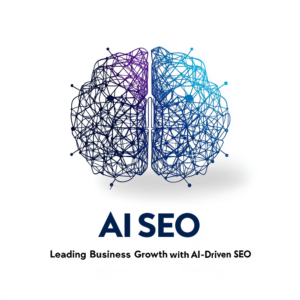Unlocking teh Power of AI for PAA Ranking Success: Maximize Your SEO
In the ever-evolving landscape of digital marketing, staying ahead of the competition requires more than just a basic understanding of search engine optimization (SEO). As consumers increasingly turn to search engines for answers, platforms like Google have adapted their algorithms, emphasizing the importance of providing users with thorough and relevant information. One impactful feature that has emerged from this evolution is the “People Also Ask” (PAA) box, a dynamic tool that not only enhances user experience but also offers significant SEO opportunities for savvy marketers.
In this article, we will explore how to maximize your SEO efforts by leveraging artificial intelligence (AI) strategies specifically designed to boost your chances of ranking in the PAA section.By embracing AI-driven techniques, you can enhance content relevance, improve keyword targeting, and ultimately drive more traffic to your site. Whether you’re a seasoned SEO professional or just starting your digital marketing journey, our insights will equip you with the tools needed to capitalize on one of the most effective components of modern search results. let’s dive into the strategies that can elevate your SEO game and position your brand for unparalleled success.
Table of Contents
- Understanding the Power of People Also Ask in SEO Optimization
- Leveraging AI Tools for Enhanced Keyword and Content Insights
- Crafting targeted Content to Dominate PAA Queries
- Measuring Success: Analyzing Performance Metrics for PAA Rankings
- Closing Remarks
Understanding the Power of People Also Ask in SEO Optimization
One of the most significant advantages of the “People Also Ask” (PAA) feature lies in its ability to enhance visibility on search engine results pages (SERPs). By targeting keywords that trigger thes questions, website owners can effectively position their content to align with user intent. To capitalize on this, consider the following strategies:
- Identify Relevant Queries: Utilize tools like Google Search Console or keyword planners to find out what questions are being asked in your niche.
- Create In-Depth Content: Develop comprehensive articles or blog posts that directly answer these PAA queries.
- Optimize for Snippets: Structure your answers in a way that they can be easily pulled as snippets by search engines.
Incorporating these tactics not only helps in appearing in the PAA section but also boosts overall site engagement. An effective approach involves understanding the relationship between PAA questions and broader search trends. This understanding allows for strategic content planning:
| Strategy | Effectiveness |
|---|---|
| Keyword Research | High |
| Content Structure Optimization | Medium |
| User Engagement Tracking | High |
By creating content that addresses common questions and structuring it effectively, you not only boost your chances of ranking in the PAA section but also enhance the overall user experience on your site, driving more organic traffic and encouraging visitors to explore additional content.
Leveraging AI Tools for Enhanced Keyword and Content Insights
In today’s fast-paced digital landscape, harnessing AI tools can significantly enhance your approach to keyword research and content insights. These technologies offer unprecedented speed and accuracy in analyzing large datasets, allowing marketers to uncover valuable keyword opportunities that may have been overlooked.Some of the primary benefits of utilizing AI in this domain include:
- Data-Driven Analysis: AI algorithms sift through extensive data to identify keyword trends based on user behavior and search patterns.
- Competitor Insights: By analyzing competitors’ content, AI can reveal which keywords are driving traffic and conversions, helping you better strategize your own content.
- Content Optimization: Many AI tools provide suggestions for keyword placement and topic relevance, ensuring your content aligns with current search intents.
To further refine your SEO strategies, consider integrating AI-powered platforms that compile actionable insights into comprehensive reports. This allows you to focus on creating high-quality content while the AI handles the heavy lifting of data analysis. Here is a simple comparison of AI tools and their primary functionalities:
| AI Tool | Key Feature | Ideal For |
|---|---|---|
| SEMrush | Keyword magic Tool | In-depth keyword analysis |
| Ahrefs | Content Explorer | Competitor research |
| MarketMuse | Content Briefs | Content strategy optimization |
Crafting targeted Content to Dominate PAA Queries
Creating content that resonates with users and answers their queries directly is essential for excelling in PAA (People Also Ask) rankings. Focus on identifying common questions related to your target keywords.This requires thorough keyword research, where tools like Google Search Console, SEMrush, or Ahrefs can be leveraged to discover the specific phrases that trigger PAA features.Once you have this data, craft clear and concise responses that not only provide value but also align with the typical structure of the questions posed. Aim for phrases that are informative and directly answerable to enhance your chances of being featured.
Moreover, organizing your content into subheadings and bullet points can significantly improve readability and user experience. Aim to use a variety of formats such as:
- FAQs that address multiple sub-queries in one place.
- Step-by-step guides for complex topics.
- Comparison tables for speedy analysis between options.
utilizing structured data markup such as schema can also help search engines understand your content better, further increasing your likelihood of appearing in PAA results. In addition to answering the questions, you should also consider the tone and style that correlates with user expectation, ensuring relevance and engagement in your writing.
Measuring Success: Analyzing Performance Metrics for PAA Rankings
To effectively gauge how well your content is performing in People Also Ask (PAA) rankings, it’s essential to monitor key performance metrics. These metrics provide valuable insights into user engagement, visibility, and the overall effectiveness of your SEO strategies. Focus on tracking the following indicators:
- Click-Through Rate (CTR) – Identify how often users click on your PAA link versus the number of impressions.
- Average Position – Monitor the ranking of your content in search results over time to evaluate shifts and trends.
- Engagement Metrics – Analyse time spent on page and bounce rates to determine user interest and content relevance.
- Backlink Growth – Assess improvements in your backlink profile, as this can directly influence your ranking potential.
In addition to performance indicators,utilizing analytics tools can streamline your evaluation process. By employing advanced platforms such as Google Analytics or SEMrush, you can create a more structured overview of your SEO success. A simplified table can help visualize your metrics:
| Metric | Current value | Target Value |
|---|---|---|
| CTR | 3.5% | 5% |
| Average Position | 7.2 | 5 |
| Bounce Rate | 45% | 35% |
| backlinks | 150 | 200 |
Closing Remarks
the landscape of SEO is continually evolving, and leveraging AI strategies to enhance your ranking in People Also Ask (PAA) sections is a game changer. By understanding user intent,optimizing content for featured snippets,and utilizing AI tools for keyword research and content creation,you can position yourself ahead of the competition. remember, triumphant SEO isn’t just about keyword stuffing or chasing algorithms—it’s about delivering genuine value to your audience. As you integrate these AI strategies into your digital marketing efforts, stay agile, monitor your metrics, and be ready to iterate on your approach as the technology and search behaviors evolve. With persistence and the right tools, you can maximize your SEO potential and achieve PAA ranking success. Thank you for reading, and here’s to your continued success in the ever-changing world of SEO!


